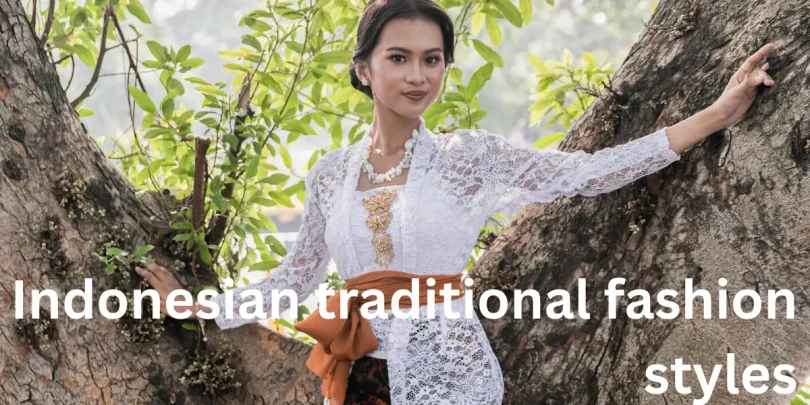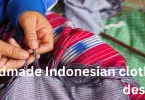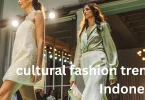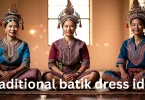Let’s be real — fashion trends come and go faster than we can keep up. One moment everyone’s into minimalist neutrals, and the next, it’s all about bold prints and statement colors. But you know what never goes out of style? Indonesian traditional fashion styles. There’s something so effortlessly graceful, meaningful, and powerful about the way these traditional outfits tell stories — stories of heritage, artistry, and cultural pride.
If you’ve ever seen someone wearing a stunning kebaya, a vibrant batik, or a shimmering songket and thought, “Wow, I wish I knew more about that,” then you’re in the right place. Today, we’re diving deep into the world of Indonesian fashion heritage — but in a way that feels like chatting with a friend over coffee. No fluff, no fancy jargon — just a warm, down-to-earth guide to understanding and appreciating Indonesian traditional fashion styles.
Why Indonesian Traditional Fashion Styles Are More Than Just Clothes
When we talk about Indonesian traditional fashion styles, we’re not just talking about what people wear — we’re talking about identity. Each piece of clothing carries history, artistry, and a deep connection to community and nature. Indonesia’s rich cultural diversity (with more than 17,000 islands and hundreds of ethnic groups!) makes its traditional fashion one of the most colorful and symbolic in the world.
A reflection of culture and tradition
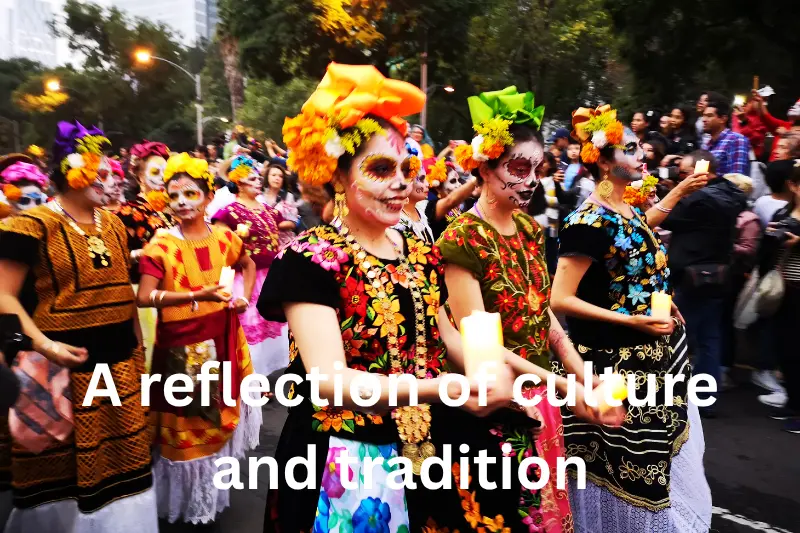
Every island, tribe, and region in Indonesia has its own unique way of dressing — each outfit shaped by climate, materials, customs, and beliefs. From the delicate lacework of Javanese kebaya to the bold woven patterns of Balinese songket, every style whispers tales of the land it came from.
A symbol of status and pride
In many regions, clothing was traditionally a marker of social class or family status. For example, certain batik motifs were once reserved only for royalty, while specific accessories could signify one’s rank or role in society. Wearing traditional attire today isn’t just about fashion — it’s a way to honor your roots and express pride in cultural identity.
A Journey Through Indonesia’s Iconic Traditional Styles
Now that we’ve got the essence, let’s take a little tour around the archipelago and explore some of the most beloved Indonesian traditional fashion styles.
The Graceful Kebaya
If elegance had a name, it would be “kebaya.” This long-sleeved blouse, often made from lace or sheer fabric, is fitted to highlight the body’s natural curves. Usually paired with a batik or songket sarong, the kebaya symbolizes refinement and femininity.
There are many regional variations — like the Javanese kebaya that’s classic and modest, or the Balinese version that’s more colorful and vibrant. The kebaya has even found its place on the international stage, worn by Indonesian diplomats and flight attendants as a national costume.
The Artistic Batik
You can’t talk about Indonesian traditional fashion styles without mentioning batik. Recognized by UNESCO as a Masterpiece of Oral and Intangible Heritage of Humanity, batik isn’t just a textile — it’s an art form.
The process of making batik involves applying wax to fabric in intricate patterns, then dyeing it to create colorful, detailed motifs. Each pattern tells a story — some symbolize fertility, others peace or prosperity. It’s not unusual for certain batik designs to be worn only on specific occasions like weddings or religious ceremonies.
The Luxurious Songket
Songket is all about shimmer and craftsmanship. It’s a handwoven fabric made with metallic threads, giving it a rich, glowing look. Originating from Sumatra, especially in Palembang, songket represents luxury and is often worn during weddings or royal ceremonies.
Creating songket is no easy task — it can take weeks or even months to weave just one piece. But every thread speaks of patience, skill, and devotion, making songket a true cultural gem.
The Humble Sarong
Simple, versatile, and deeply traditional — the sarong is the heartbeat of Indonesian daily wear. It’s basically a large tube of cloth wrapped around the waist, worn by both men and women. From casual home wear to temple visits, the sarong adapts to every situation.
In fact, each region has its own version of sarong — with distinct colors, patterns, and meanings. It’s a symbol of unity through simplicity, showing how practicality and culture can coexist beautifully.
The Elegant Ulos and Tenun
Moving north to Sumatra, the Batak people are known for their ulos — handwoven textiles filled with symbolic meaning. They’re often used in traditional ceremonies, symbolizing blessings, protection, and connection among family members.
Similarly, tenun (woven cloth) is a term that encompasses various regional weaving techniques. Each tenun pattern tells a story, using color and texture to express identity. From Flores to Sumba, these woven fabrics are treasured as heirlooms and cultural expressions.
The Meaning Behind Colors and Patterns
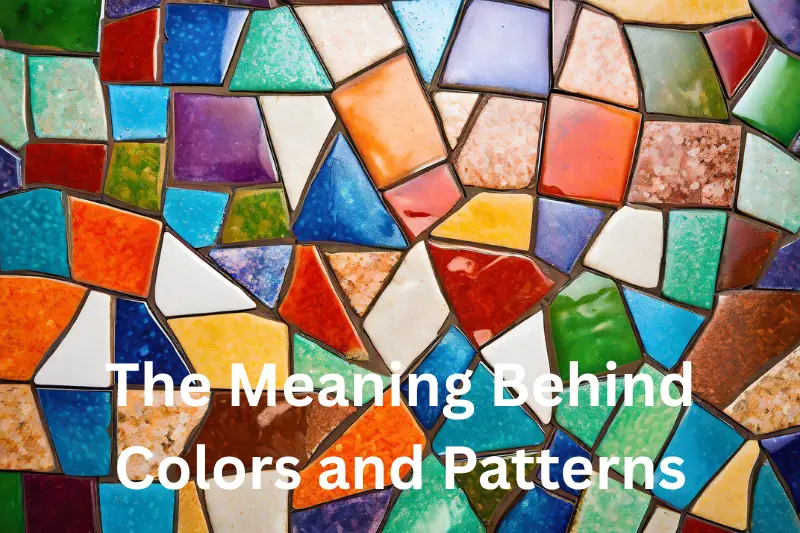
You might notice how each piece of traditional clothing carries a specific color palette or motif. That’s not by accident. Every color, every swirl of pattern, has a purpose.
Symbolism in colors
- Red often symbolizes courage or energy.
- Gold represents royalty and wealth.
- Blue reflects calmness, faith, and wisdom.
- White stands for purity and spirituality.
Motifs that tell stories
Traditional motifs can depict everything from flora and fauna to philosophical ideas. The “parang” pattern in Javanese batik, for example, symbolizes strength and resilience — qualities that leaders are expected to embody. Meanwhile, floral designs represent beauty, fertility, and the harmony of nature.
These details make Indonesian traditional fashion styles not just visually appealing but deeply meaningful.
How Traditional Fashion Inspires Modern Style
Here’s the deal: traditional doesn’t mean outdated. In fact, modern designers are reinventing Indonesian traditional fashion styles in exciting ways. From runway collections to everyday wear, traditional fabrics like batik and tenun are making bold comebacks.
Fusion of old and new
Designers are mixing modern silhouettes with traditional fabrics — think batik jumpsuits, kebaya-inspired blouses, or songket jackets. The result? A perfect balance of heritage and modern fashion.
Celebrity influence and global exposure
Many Indonesian and international celebrities have embraced traditional attire, helping bring global attention to local artisans. It’s no longer unusual to see batik-inspired designs in international fashion weeks or red carpet events.
Empowering local artisans
The revival of traditional styles also supports local weavers, batik artists, and small-scale craftspeople. Buying or wearing these pieces means preserving culture while empowering communities economically.
When and How to Wear Indonesian Traditional Fashion Styles
If you’re new to this, you might wonder when and how to wear traditional clothing. The good news? There’s no strict rulebook — just cultural respect and a bit of confidence.
For special occasions
Traditional attire is a must during weddings, cultural ceremonies, or national holidays like Kartini Day and Independence Day. Wearing these outfits during such events shows appreciation and pride for Indonesian heritage.
For modern everyday looks
You don’t have to wait for a big celebration to enjoy traditional pieces. You can easily pair a batik skirt with a plain top or style a kebaya blouse with jeans. It’s all about expressing your unique identity while staying comfortable.
For formal settings
Batik shirts are a go-to for office wear or formal events. They strike a balance between professionalism and cultural pride — making you look polished while standing out authentically.
Challenges in Preserving Traditional Fashion
Let’s be honest — as global fashion trends dominate, traditional wear can sometimes feel overlooked by the younger generation. Fast fashion has also made it harder for handcrafted textiles to compete.
However, there’s a growing awareness of sustainability and cultural appreciation that’s changing the tide. People are realizing that supporting traditional craftsmanship isn’t just about fashion — it’s about preserving art, history, and livelihood.
Schools, designers, and communities are actively educating younger generations about these traditions, ensuring that Indonesian traditional fashion styles continue to thrive for years to come.
How to Start Your Own Traditional Fashion Journey
Feeling inspired to explore these beautiful styles yourself? Here are a few friendly tips to get you started:
Learn the stories behind the fabrics
Before buying or wearing a piece, take a moment to learn about its origin. Understanding the meaning behind motifs makes the experience more personal and respectful.
Support local artisans
Whenever possible, buy directly from local craftsmen or ethical fashion brands. This way, you’re helping preserve traditional skills while getting a piece that’s made with love and authenticity.
Mix and match confidently
Don’t be afraid to blend traditional and modern styles. Whether it’s a batik blazer or a kebaya-inspired crop top, fashion is all about self-expression.
Take care of your fabrics
Traditional fabrics are delicate, so always handle them with care. Handwash when possible, and store them in a clean, dry space to keep their beauty intact.
Embracing Identity Through Fashion
Wearing traditional attire isn’t just about looking stylish — it’s about embracing your cultural identity. When you put on a piece of Indonesian traditional fashion styles, you’re wearing a piece of history, craftsmanship, and community.
It’s a gentle reminder that fashion can be meaningful, sustainable, and empowering. In every stitch, pattern, and color lies the story of Indonesia — a story that continues to inspire people across generations.
Conclusion
At the end of the day, exploring Indonesian traditional fashion styles is about celebrating who we are — a nation rich in creativity, diversity, and tradition. Whether you’re wearing a kebaya for a special event or rocking a batik shirt to work, every choice connects you to a deeper heritage.
So, here’s a little checklist to keep your fashion journey grounded and joyful:
- Learn about your favorite traditional fabrics.
- Support artisans and ethical brands.
- Mix tradition with modern style confidently.
- Wear your culture with pride and purpose.
FAQs
What makes Indonesian traditional fashion styles unique?
They reflect the country’s rich cultural diversity, blending intricate craftsmanship, symbolic motifs, and traditional fabrics unique to each region.
What are some famous examples of Indonesian traditional fashion styles?
Popular ones include the batik, kebaya, songket, and sarong, each representing distinct regional traditions and artistry.
How do Indonesian traditional fashion styles influence modern fashion?
Many designers fuse traditional fabrics and patterns with contemporary designs, creating a modern yet cultural aesthetic.
When are Indonesian traditional fashion styles usually worn?
They are often worn during weddings, cultural ceremonies, festivals, and national celebrations to honor heritage.
Can Indonesian traditional fashion styles be worn casually?
Yes, modern adaptations make them more versatile—batik shirts, kebaya tops, or songket skirts can easily fit into daily or semi-formal outfits.

